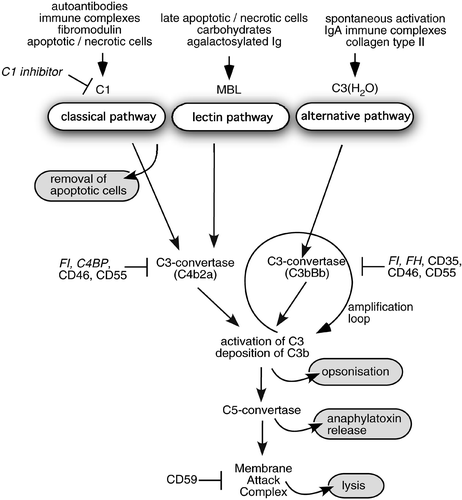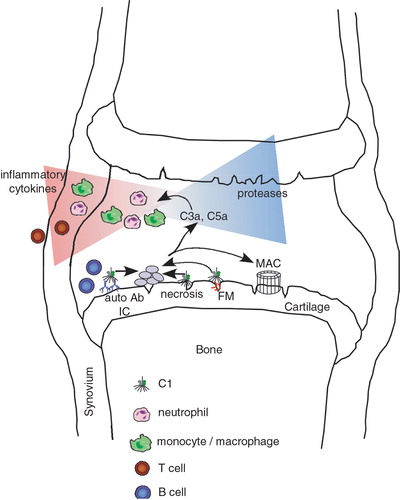Figures & data
Table I. Evidence for involvement of complement in rheumatoid arthritis (RA) observed in animal models.
Table II. Therapeutic approaches to complement inhibition in rheumatoid arthritis.

